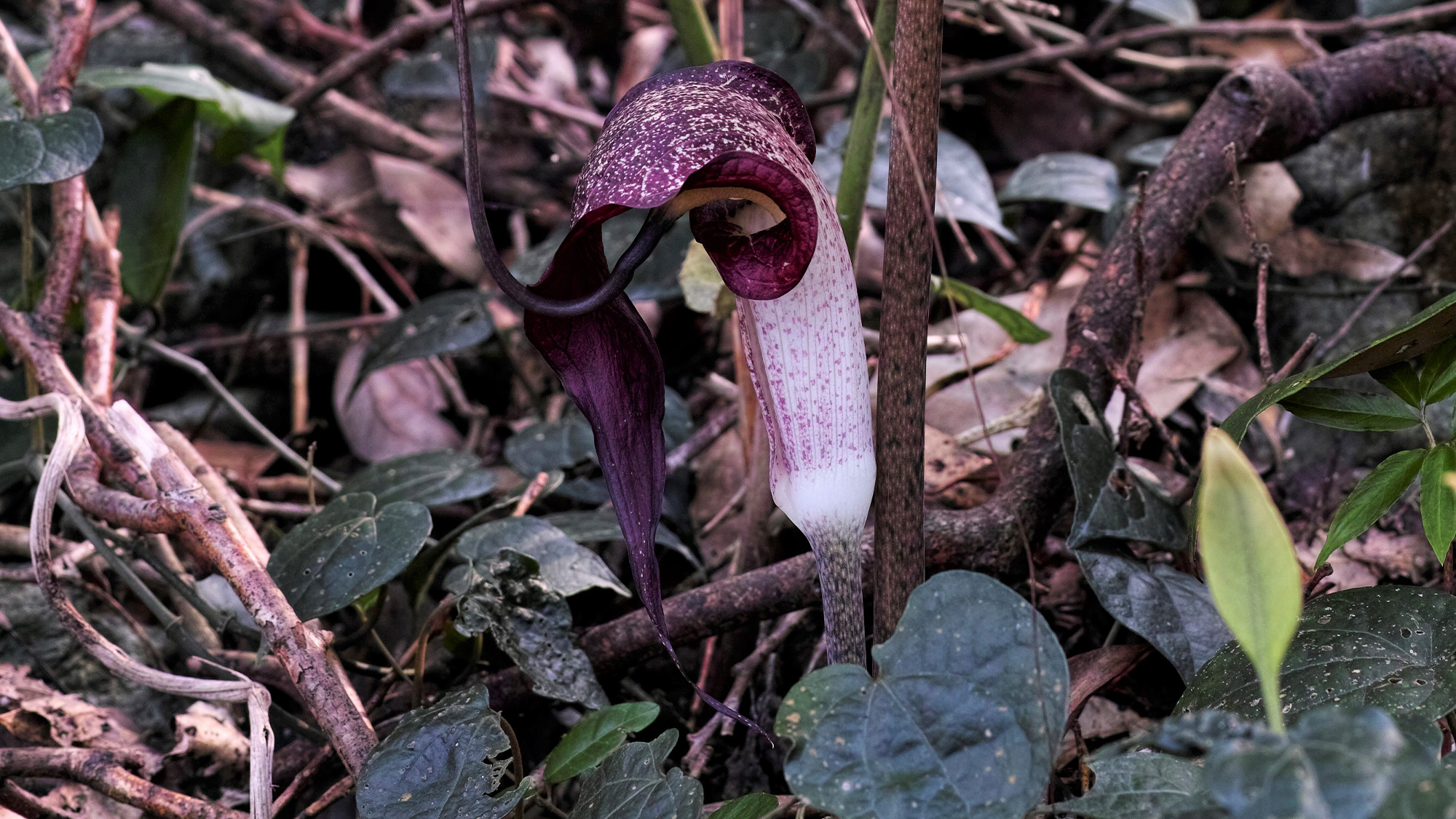

Earth is home to some pretty gnarly carnivorous plants that will use sticky digestive juices to eat bugs and other plants that will even trick flies into mating with them. New research into the plant genus Arisaema points to an unusual evolutionary process within the plant kingdom. The relationship between a species of the carnivorous Arisaema plant genus may have a more nuanced relationship with its insect prey. The gnats that end up escaping from Arisaema’s waxy flowers may help by eating some of its decaying flowers. The findings are described in a study published February 19 in the journal Plants People Planet.
[Related: Two newly discovered Andes Mountain plant species have an appetite for insects.]
Luring pollinators to their deaths
Many plants rely on animals like bees, butterflies, and moths for pollination. Most also offer some kind of reward like nectar for their reproductive services. However, some plants like species in the genus Arisaema deceive their pollinators.
“It is famous as the only plant that achieves pollination at the expense of the pollinator’s life,” Kenji Suetsugu, a study co-author and biologist at Kobe University in Japan, said in a statement.
These plants use a musky odor to lure the fungus gnats that typically feed and lay their eggs on mushrooms into their cup-shaped flowers. The fungus gnats can escape from male Arisaema flowers, but only after being covered in the plant’s pollen. Females provide no means of escape. Once the insects are in a female Arisaema flower, the gnats will struggle to find an exit since they can’t get a hold of the wavy interior. This kills the gnats and ensures that the flower will be pollinated.
Looking beyond an ‘antagonistic’ relationship
Suetsugu’s team sought to challenge traditional views in pollination biology and designed experiments to look for more nuanced interactions between Arisaema plants and their prey. In the study, they collected male and female flowers of the species Arisaema thunbergii. They looked closer at what species of insects got trapped and what happens to the flowers after pollination.
They found the main pollinator was a fungus gnat named Leia ishitanii. The insect lays its eggs into the flowers and its larvae actually feed on the decaying flowers. The developing fungus gnats then emerge after a few weeks in this plant nursery. The younger insects sometimes come away from the flowers without any adult corpses from fellow members of its species. According to the team, this suggests that at least some of the fungus gnats can escape the flower’s trap.

This interaction between insect and plant appears to be a new example of mutualism. This is where two different species form a bond for mutual benefits, like when oxpecker birds feed on the insects that live in large mammals’ fur. The larvae eating the decaying flowers could be beneficial to the A. thunbergii in a similar way, but more study is needed to confirm this.
[Related: Carnivorous pitcher plants may use tempting aromas to lure prey to their death.]
“The interaction between the plant and the insect probably still differs from other typical examples of nursery mutualism,” said Suetsugu.
The fungus gnats do not depend on A. thunbergii as its only source of a nursery and the bugs that are permanently trapped in the flower are deprived of further egg-laying opportunities elsewhere. Interacting with these carnivorous flowers does appear to be costly to the insects.
Full of surprises
A. thunbergii may be an example of an unusual evolutionary process that moves from deception solely for food towards a more mutualistic relationship where the gnats get a nursery and the plants have their decaying leaves taken care of. The team speculates that taking a closer look at other members of the Arisaema genus may yield similar kinds of interactions.
“This finding adds a new dimension to our knowledge of plant-insect interactions, but the most exciting aspect is that even in well-studied fields, there is still much to learn,” said Suetsugu. “Nature is full of surprises!”